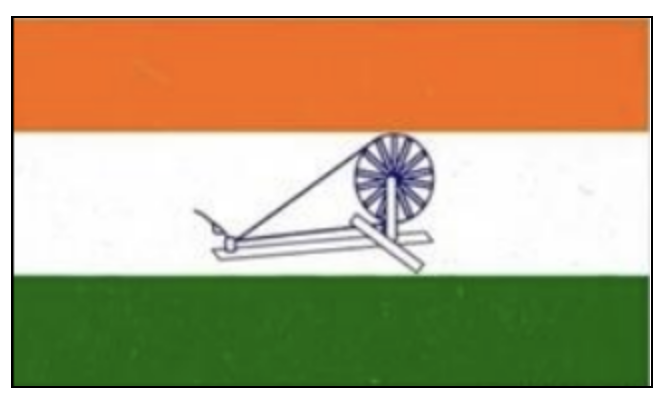News Excerpt:
Every year, on July 22, India observes National Flag Day to honor the tricolor flag's adoption.
- This momentous day commemorates the official adoption of tricolor by the Constituent Assembly on July 22, 1947.
Evolution of the Indian National Flag
- In 1931, a formal resolution was passed adopting Pingali Vekaiah's flag with slight modifications. The original white and green stripes were retained, but the red stripe was replaced with saffron.

- Finally, in July 1947, the Constituent Assembly formally adopted the flag for independent India. The spinning wheel was replaced by the Dharma Chakra of Emperor Ashoka, symbolizing truth and life. This flag came to be known as the Tiranga.
- It served as the national flag of the Dominion of India until January 26, 1950, and has been the flag of the Republic of India ever since.

Design of the Flag
- The flag is a horizontal tricolor of deep saffron at the top, white in the middle, and dark green at the bottom, all in equal proportions.
- The ratio of the flag's width to its length is 2:3.
- In the center of the white band is a navy blue wheel, known as the Ashoka Chakra, with 24 spokes.
- This design is inspired by the wheel on the abacus of the Sarnath Lion Capital of Ashoka.
Colors of the Flag
- Saffron (Kesari): Represents the strength and courage of the country.
- White: Symbolizes peace and truth, with the Dharma Chakra.
- Green: Denotes the fertility, growth, and auspiciousness of the land.
The Ashoka Chakra
- The Dharma Chakra, or "wheel of the law," depicted in the center of the flag, was made by the 3rd-century BC Mauryan Emperor Ashoka.
- It signifies the importance of movement and progress, indicating that life is in motion and stagnation leads to death.
Flag Code of India
- The hoisting/use/display of the Indian National Flag is governed by the Prevention of Insults to National Honour Act, 1971 and the Flag Code of India, 2002.
- On January 26, 2002, the Flag Code of India was modified, allowing Indian citizens to hoist the national flag over their homes, offices, and factories on any day, not just on national holidays.
- The Flag Code of India, 2002 was later amended in December, 2021 and National Flag made of polyester or machine made Flag have been allowed.
Do's and Don'ts for Flag Usage
- Do's:
-
- The National Flag may be hoisted in educational institutions to inspire respect.
- The public, private organizations, or educational institutions may display the National Flag on all occasions, maintaining its dignity.
- Private citizens have the right to fly the flag on their premises.
- Don'ts:
- The flag cannot be used for communal purposes, drapery, or clothing.
- It should be flown from sunrise to sunset, irrespective of the weather.
- The flag must not touch the ground, floor, or water, nor be draped over vehicles, trains, boats, or aircraft.
- No other flag or bunting should be placed higher than the National Flag, and no objects, including flowers or garlands, should be placed on or above it.
- The flag cannot be used as a festoon, rosette, or bunting.


